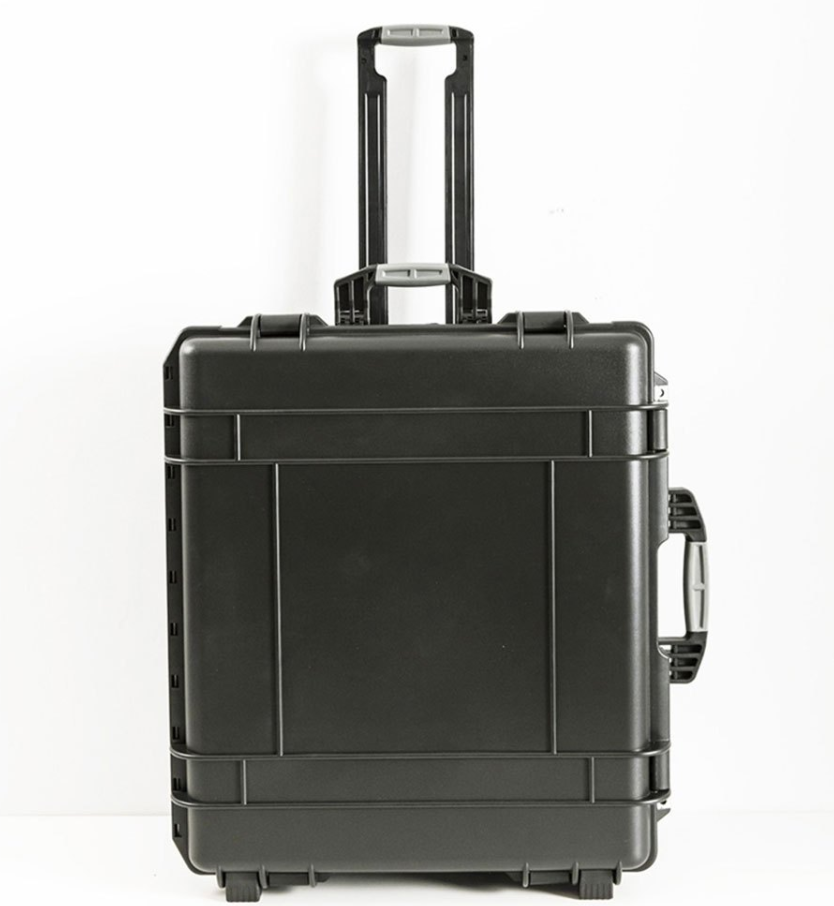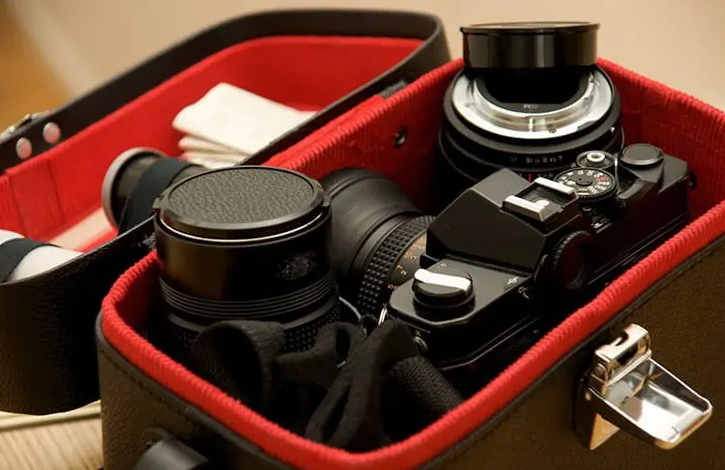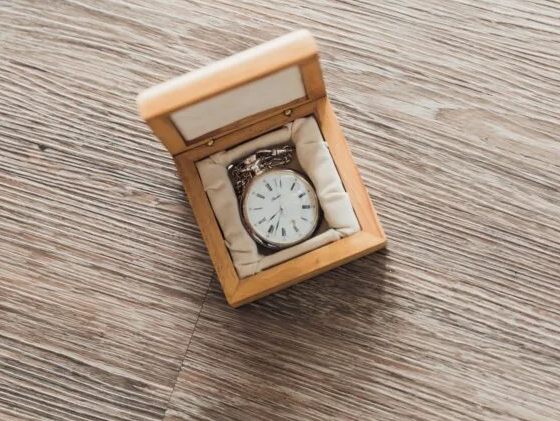Hard cases are made through processes like injection molding, die casting, or vacuum forming, followed by design customization and feature implementation.
Table of Contents
Types of Hard Cases
Metal Cases
Metal cases stand out for their durability and high resistance to impacts. Often constructed from materials like aluminum or stainless steel, these cases offer excellent protection against harsh environmental conditions. They are often the choice for military applications or transporting sensitive instruments.
- Durability: Metal cases can withstand extreme conditions, making them ideal for rugged applications.
- Security: They often come with advanced lock mechanisms, providing an extra layer of protection.
- Weight: Despite their strength, metal cases like those made from aluminum can be relatively lightweight.

Plastic Cases
Plastic cases, commonly made from materials like polycarbonate or ABS plastic, offer a cost-effective solution for less demanding applications. They are popular in consumer electronics, first aid kits, and tool storage.
- Affordability: Generally less expensive to manufacture and buy.
- Versatility: Available in various sizes, colors, and designs.
- Water Resistance: Many plastic cases offer water-resistant or waterproof features.
Composite Material Cases
These are the hybrid options that combine the best features of metal and plastic cases. Materials such as carbon fiber composites provide the strength of metal while retaining the lightweight characteristics of plastic.
- Lightweight Strength: Composite materials like carbon fiber offer an excellent strength-to-weight ratio.
- Aesthetics: These cases often feature sleek, modern designs.
- Special Features: Composite cases may include special insulation properties or built-in compartments for specific uses.
Materials Used
Aluminum
Aluminum is a popular material for making hard cases, especially when durability and lightweight characteristics are essential. It’s often used in military applications and for storing sensitive instruments. Aluminum is corrosion-resistant and provides excellent thermal and electrical insulation.
- Corrosion-Resistance: Aluminum offers resistance to rust and other forms of corrosion, making it ideal for use in harsh environments.
- Lightweight: Despite its strength, aluminum is lightweight, making it easier to carry.
- Thermal Insulation: The material has a low thermal conductivity, making it suitable for temperature-sensitive items.
Polycarbonate
Polycarbonate is a type of thermoplastic that’s widely used in the creation of less expensive hard cases. You’ll often find this material in consumer electronics cases, luggage, and even some types of safety gear.
- Impact Resistance: Polycarbonate has excellent resistance to impacts, making it almost shatterproof.
- Transparency: One of its unique characteristics is its transparency, allowing for cases where visual access to the interior is needed.
- UV Resistance: Many polycarbonate cases come with UV resistance, offering protection against sunlight.
ABS Plastic
ABS (Acrylonitrile Butadiene Styrene) Plastic is another common material used in the production of hard cases. This material is known for its toughness and resistance to physical impacts. ABS is frequently found in toolboxes, protective equipment cases, and portable storage solutions.
- Durability: ABS plastic is extremely durable and can withstand physical impacts and pressures.
- Cost-Effectiveness: One of its major advantages is its affordability, especially when compared to metals.
- Ease of Customization: ABS can be easily molded into complex shapes, providing a range of design options for specialized applications.
Design Process
Conceptualization
The first step in creating a hard case is conceptualization, where designers sketch initial ideas and think through the requirements. They consider the application, the materials, and the key features the case should have. This stage often involves brainstorming sessions and initial drawings.
- Needs Analysis: Understanding the requirements for the case is critical, such as whether it will be used for military applications or consumer goods.
- Sketching: Designers start by creating initial sketches to visualize their ideas.
- Feasibility Study: Teams evaluate the practicality of the designs, considering factors like cost, materials, and production methods.
3D Modeling
After settling on a concept, designers move on to 3D modeling. Here, they use specialized software to create a digital prototype of the hard case. This allows for thorough evaluations and adjustments before any physical prototype gets made.
- Digital Prototyping: Using software like CAD, designers create highly detailed digital models.
- Dimensional Accuracy: At this stage, designers ensure that all measurements and specifications are precise.
- Virtual Testing: Some software allows for simulation of real-world conditions to test the design’s strength and durability.
Prototyping
Once the design passes the digital phase, a physical prototype is produced. This is a crucial stage for testing the case’s functionality, durability, and usability. Feedback from this stage often leads to design iterations.
- Material Testing: The prototype undergoes rigorous testing to evaluate how well the chosen material performs under various conditions.
- User Feedback: Potential users or stakeholders often evaluate the prototype to provide feedback on its functionality and design.
- Design Iterations: Based on feedback and testing, the design undergoes revisions before proceeding to mass production.
Manufacturing Methods
Injection Molding
Injection molding is a commonly used method for creating plastic hard cases, including those made of materials like polycarbonate and ABS plastic. In this process, molten plastic gets injected into a mold cavity, then cools and solidifies into the final shape of the case.
- Speed: One of the main advantages is the speed at which cases can be produced.
- Precision: Injection molding allows for high dimensional accuracy, ideal for cases that require a tight fit.
- Economies of Scale: This method becomes cost-effective when producing a large number of units, thanks to the mass production capabilities.
Die Casting
Die casting is a popular method for manufacturing metal cases, especially those made of aluminum or other lightweight metals. The process involves forcing molten metal into a mold cavity under high pressure. Once the metal solidifies, you have a highly durable and precise hard case.
- Strength: Cases made through die casting are generally stronger and more durable than those made through other methods.
- Complex Geometries: This method allows for the creation of intricate designs and complex shapes.
- Surface Finish: Die casting typically produces a smoother surface compared to other methods, reducing the need for post-processing.

Vacuum Forming
A vacuum removes the air between the mold and the plastic, causing the plastic to conform to the mold’s shape.
- Lower Cost: Vacuum forming is generally less expensive for short runs, making it suitable for custom projects.
- Simplicity: This method is simpler and requires fewer specialized tools than injection molding or die casting.
- Material Choices: Vacuum forming allows for a wider range of materials and finishes, offering more design flexibility.
Internal Features
Foam Inserts
Foam inserts provide additional cushioning and protection for the items stored inside the hard case. They can be custom-cut to fit specific objects, ensuring they remain securely in place during transport.
- Protection: Foam inserts excel in absorbing shocks and vibrations, safeguarding fragile or sensitive equipment.
- Customization: They can be cut precisely to accommodate various shapes, from camera lenses to musical instruments.
- Material Options: Different types of foam offer various levels of density and cushioning, depending on the needs.
Pockets and Compartments
Having organized internal space enhances the usability of the hard case. Pockets and compartments serve to separate different items, making it easier to locate and access them.
- Organization: Pockets and compartments enable better sorting of items, especially for tool kits or medical supplies.
- Easy Access: Well-placed compartments can speed up the process of finding what you need.
- Versatility: Some cases offer removable or adjustable dividers for greater flexibility in organizing the interior space.
Customization Options
For those who have specific needs, customization options allow you to tailor the internal features of your hard case. Whether you need additional padding or specialized compartments, many manufacturers offer these options.
- Special Features: Some manufacturers offer built-in electrical outlets, cooling systems, or even RFID tracking capabilities.
- Made-to-Order: In some instances, you can commission a completely custom-designed interior to fit highly specialized equipment.
External Features
Latches and Locks
Security is a top concern when selecting a hard case, and latches and locks play a critical role in this. From simple snap closures to complex key or combination locks, these features ensure that your items remain secure.
- Security: A strong latch or lock provides a level of protection against theft or accidental opening.
- Ease of Use: Some latches offer one-handed operation or quick-release mechanisms for convenient access.
- Specialized Locks: For extra security, some hard cases offer biometric locks or RFID-based locking systems.

Handles and Straps
Handles and straps contribute to the portability and ease of handling of the hard case. Depending on the case’s intended use and the weight of its contents, different types of handles and straps may be preferable.
- Ergonomics: Some cases feature padded handles or ergonomic designs for easier carrying.
- Versatility: Many hard cases offer multiple carrying options, such as a top handle, side handles, or even shoulder straps.
- Load Distribution: In larger cases, well-designed handles and straps can help distribute weight more evenly, making the case easier to carry.
Water-Resistant Seals
For those who need to use their hard case in challenging environments, water-resistant seals are a crucial feature. These seals prevent moisture from entering the case, providing an extra layer of protection for the contents.
- Protection: A good seal safeguards against water damage, making it suitable for outdoor uses or marine environments.
- Maintenance: Although these seals are generally durable, they may require periodic checks or replacements to maintain their effectiveness.






